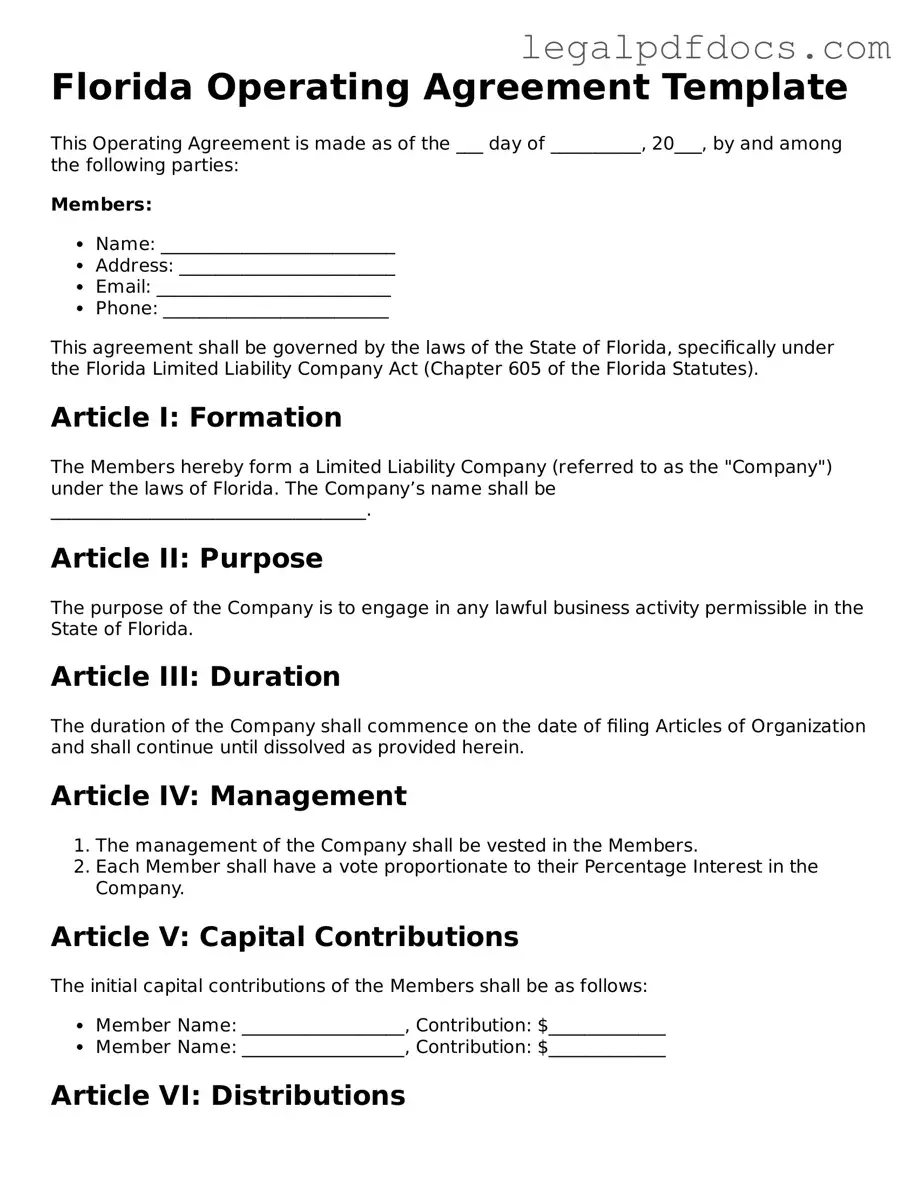Official Operating Agreement Form for Florida
The Florida Operating Agreement form is a legal document that outlines the management structure and operating procedures of a limited liability company (LLC) in Florida. This agreement helps clarify the roles and responsibilities of members, ensuring smooth operations within the business. To get started on creating your own Operating Agreement, fill out the form by clicking the button below.
Open Operating Agreement Editor Here
